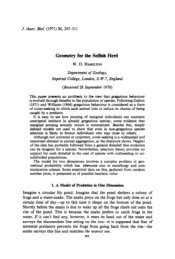Chapter 6 - Ethical Culture Fieldston School
Chapter 6 - Ethical Culture Fieldston School
Chapter 6 - Ethical Culture Fieldston School
Create successful ePaper yourself
Turn your PDF publications into a flip-book with our unique Google optimized e-Paper software.
“Mr. Sinatra Gets Rejected”<br />
In my mind, however, the actual summit was reached on this March<br />
night. Sinatra was reputedly miserable. His wife Nancy was refusing to give him<br />
a divorce, and a notably unsympathetic Gardner, who had a weakness for<br />
Spanish bullfighters, was making it clear to Sinatra that she would not wait<br />
indefinitely to get married. Interestingly, the song scheduled for the evening’s<br />
session was one – the only one, in fact – for which Sinatra claimed a songwriting<br />
credit. It was called “I’m a Fool to Want You.” 38<br />
To borrow a term of psychoanalysts, the tone of “I’m a Fool to Want You”<br />
was “overdetermined” before he ever sang a note. Arranger Alex Stordahl<br />
opened the song with dark, almost weeping strings, a mood augmented by<br />
haunting backup vocals. When Sinatra himself enters, the emotion escalates even<br />
as the arrangement recedes; the intensity he brings to the words takes the feeling<br />
beyond heartsickness into bona fide grief. The death in question is not that of a<br />
relationship, but rather the self‐respect of a man who hates himself for what he<br />
has become. Mere words can’t express this loathing: you have to hear it to<br />
believe it. Although a composer and lyricist also worked on the song (and<br />
probably were the primary writers), it seems unusually apropos for Sinatra to<br />
receive songwriting credit for “Fool”: his contribution to it is utterly<br />
unmistakable.<br />
One of the more remarkable aspects of “Fool” is that it does not simply<br />
capture a powerful inner experience. It also charts a trajectory of emotion from<br />
resistance to capitulation. At first, the singer acknowledges that indulging in his<br />
longing is counterproductive. But by the bridge of the song, there’s a slippage<br />
between past and present, and it becomes increasingly clear that its lovelorn<br />
protagonist has not gotten over the relationship. In the end, he lapses into a<br />
38 For factual background on “I’m a Fool to Want You,” see Ed O’Brien with Robert Wilson, Sinatra 101:<br />
American History for Cynical Beginners<br />
32
















